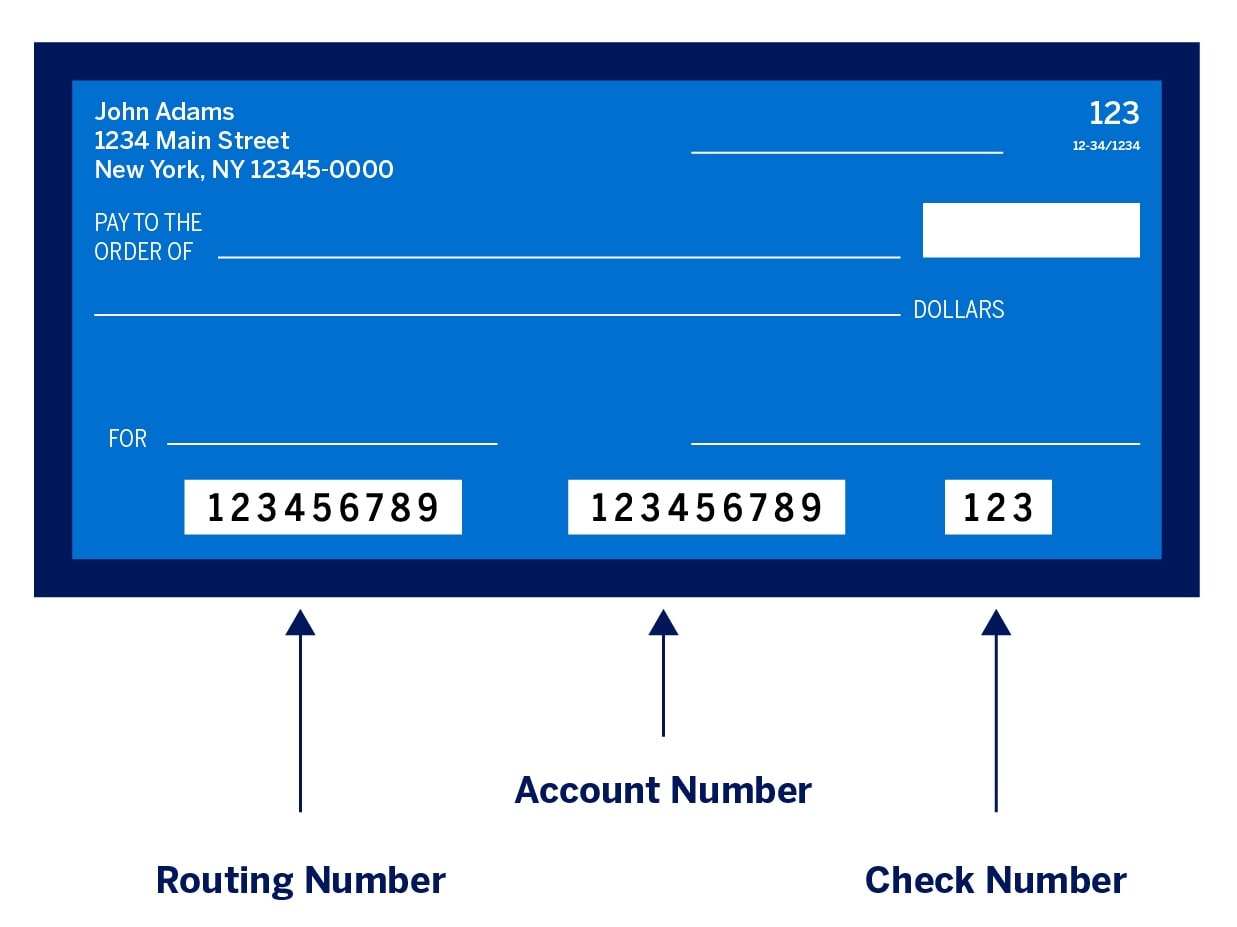How to Find the Routing Number on a Check
4 Min Read | Published: May 8, 2024

This article contains general information and is not intended to provide information that is specific to American Express products and services. Similar products and services offered by different companies will have different features and you should always read about product details before acquiring any financial product.
The routing number on a check is not difficult to find. Knowing which numbers are which can provide valuable insight into the structure of a check.
At-A-Glance
- Routing numbers are displayed in the bottom left corner of a check.
- Your routing number identifies your financial institution.
- Account numbers, on the other hand, identify who the account holder is.
The routing number on a check is an important piece of information for financial transactions since it identifies your banking institution. In this article, we’ll explain why that’s important and where you can find the routing number on a check.
What Are the Numbers on a Check?
The routing number (also sometimes referred to as an ABA routing number or routing transit number) is one of the numbers that appear on a check. It serves as the bank or credit union’s identifier or ID. But if you look at a check, you’ll also see two more numbers: an account number and a check number located at the bottom of the check.
Here’s a more detailed breakdown of what they are specifically used for:
- Routing Number
A routing number is a nine-digit number that identifies a financial institution. It’s displayed on paper checks and is used for funds transfers, direct deposits, digital checks, and bill payments. - Account Number
The account number identifies the individual or business checking account. It tells the bank where to withdraw funds when someone cashes a check. It’s also used for direct deposit and direct payments. - Check Number
The check number helps the account holder keep accurate records of their transactions. The bank can also use it as a reference number to research account activity.
Routing numbers and account numbers are required for digital transactions. Check numbers are only required for paper or digital checks. When you write a check, it’s recommended that you record the check number and amount somewhere in case there’s a dispute later. Your bank or credit union may provide a check ledger you can use.
Where Is the Routing Number Located on a Check?
Routing numbers are displayed in the bottom left corner of a check. The routing number contains nine digits.

The account number is the longer of the two groups of numbers that follow the routing number. On some checks, the account number is immediately after the routing number. Other checks display the check number first. Note that character symbols are not part of either number sequence. Leading zeros are, so make sure you copy them if the bank asks for an account number.
Routing numbers are essential for many bank transactions. Common examples are for reordering checks, setting up direct deposit for your paycheck, or receiving an electronic tax refund.1 Payment apps for your mobile phone may also require a routing and account number to send and receive funds.
Other Ways to Find Your Routing Number
Some people no longer use paper checks, so they can’t look for the nine digits displayed on a check. Thankfully, that’s not the only way to find routing numbers. You may be able to find your routing number in a couple of different ways:
- Online Banking
The routing and account number for a bank account are often available at the top of the dashboard of your online banking site. - Monthly Statement
Your monthly statement should display your routing number on the first page. The full nine digits should be there. That’s different from your account number, which may be partially blocked out.
Frequently Asked Questions
In the U.S., routing numbers are nine digits. These numbers are used to identify banks and credit unions.
Account numbers are typically eight to twelve digits. They can be found to the right of the routing number on a check, either before or after the check number.2
1 “Routing Number vs. Account Number: What's the Difference?,” Investopedia
2 “Routing Number vs. Account Number: Quick Overview,” Tipalti
SHARE
Related Articles
How Do I Use a Contactless Card?
Discover the convenience of using a contactless credit card for quick and secure transactions. Learn how to tap and pay and embrace the future of touchless payments.
What Is a Credit Card Number?
Credit card numbers may seem random, but many digits serve a specific purpose, like identifying card issuers or ensuring legitimacy through a special algorithm.
What Is a CVV Number?
CVV numbers are the extra 3- or 4-digit numbers on credit or debit cards. They provide an added layer of security by ensuring the buyer has physical access to their card.
The material made available for you on this website, Credit Intel, is for informational purposes only and intended for U.S. residents and is not intended to provide legal, tax or financial advice. If you have questions, please consult your own professional legal, tax and financial advisors.










